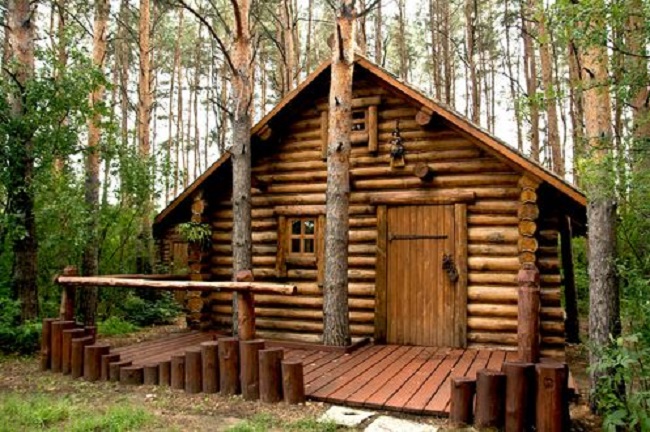Research: Living In Timber Houses Will Help Save More Than 100 Billion Tonnes Of CO2 By 2100
According to new research from Germany's Potsdam Institute for Climate Impact Research (PIK), living in timber cities could reduce emissions. Read more on Dynamite News:

Postdam [Germany]: According to new research from Germany's Potsdam Institute for Climate Impact Research (PIK), living in timber cities could reduce emissions.
According to the latest analysis, sheltering a growing population in dwellings built of wood rather than conventional steel and concrete could save more than 100 billion tonnes of CO2 emissions until 2100. These amount to around 10% of the remaining carbon budget for the 2°C climate objective.
In addition to harvesting from natural forests, freshly created timber plantations are required for the supply of construction wood. Even while this has little effect on food supply, scientists warn that biodiversity may suffer if the situation is not carefully managed.
The research is the first to look at the impacts of a widespread shift to timber cities on land use, emissions from land use change, and long-term carbon sequestration in harvested wood products. Nature Communications published the findings.
Read also: Risk of climate tipping points escalates at 1.5°C warming
"More than half of the world's population already lives in cities, and by 2100, this number will increase dramatically," said Abhijeet Mishra, lead author of the study and a scientist at the Potsdam Institute for Climate Impact Research (PIK). This means that more homes will be constructed with steel and concrete, the majority of which have a significant carbon impact."
"But we have an alternative: We can accommodate the rising urban population in mid-rise wood buildings ranging from 4 to 12 floors," Abhijeet remarked.
Also Read |
Global Study indicate Critical components missing from current climate change models
Read also: Climate change can affect economic growth of a country, reveals study
Wood is recognised as a renewable resource having the lowest carbon impact of any similar building material since trees absorb CO2 from the environment as they develop. According to Abhijeet, "the manufacture of engineered wood emits far less CO2 than steel and cement production.
Engineered wood also stores carbon, making timber cities a unique long-term carbon sink - by 2100, this may save more than 100Gt of additional CO2 emissions, or 10% of the remaining carbon budget for the 2°C objectives."
For the article, the scientists used the open-source global land use allocation model MAgPIE to analyse four distinct land-use scenarios: one with traditional building materials like cement and steel, and three with increased demand for wood on top of the regular demand for wood. They also investigated the sources of the increased demand for wooden building materials, as well as the potential consequences of direct and indirect land-use-related carbon emissions.
"Our simulation shows that adequate wood for new mid-rise urban buildings can be generated without substantial repercussions on food production," said researcher Florian Humpenoder.
"Wood is sourced from both timber plantations and wild forests." "The majority of the new timber plantations required - around 140 million hectares - are established on harvested forest areas and hence do not come at the expense of agricultural land," Humpenoder emphasises. "We need farmland to generate food for people; using it to grow trees may result in competition for limited land resources."
Also Read |
PM Modi: Climate protection is part of India's ethos
Increasing forest harvest levels while protecting the most valuable forests
Scientists have investigated the effects of replacing natural ecosystems with timber plantations on biodiversity. "The question of how and where to acquire the wood for the construction of timber cities is critical," said Alexander Popp, head of the land use management group at PIK scientist and co-author of the paper.
We have imposed a clear limit to timber extraction and the addition of new tree plantations in our computer simulations: nothing can be cut off in virgin forests and biodiversity conservation areas."
Indeed, Popp stated, "The explicit conservation of these protected areas is critical, but the establishment of timber plantations at the expense of other non-protected natural areas could consequently significantly enhance future biodiversity loss."
Changing to a vegetarian or vegan diet, for example, may help free up land for food and timber production while protecting biodiversity, according to another study.
According to John Schellnhuber, another research author, "the key problem for global sustainability is the deep co-transformation of land use and construction." These two sectors, when appropriately coordinated, can capture and store critical amounts of carbon from the atmosphere without harming food security or biodiversity. This could be the crucial climate solution we've been seeking for."
"Increasing carbon storage in cities in tandem with terrestrial ecosystems is highly critical for this transition to work.(ANI)
 Dynamite News
Dynamite News 